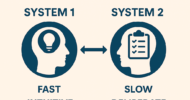
When the daytime soaps As The World Turns and All My Children went off the air, I stopped watching any daytime TV. So before their infamy this week, I’d never heard the name, Joy Behar. And maybe I’d heard the name Michelle Collins, but I’m thinking that name was my niece’s friend’s cousin or someone-or-other. And certainly, I’m not familiar with the sound of the other The View panel members to identify the laughter given in support of Behar and Collins opinions.
As social media exploded over Behar and Collins comments concerning Miss Colorado Kelley Johnson’s talent performance during the Miss America’s contest, I realized I had something to say too. Here it is. Sorting through the facts, I found myself having a singular emotion: pity. Pity for their ignorance.
I became a doctor because Maxine White, the mom of a good friend, suggested it was something within my reach. She was a nurse, the first of many nurses who influenced my career.
As a medical student, my internal medicine attending, Dr. Goodhope, shaped my initial perception of nurses. Introducing us to the ward charge nurse, Mrs. Muhm, he said, “Nurses are the most overworked, underpaid, under-appreciated members of the health care team. You must respect them.” Mrs. Muhm stood by her desk. In her white nurse cap with the black stripe, tall in her white orthopedic shoes, her arms folded, she looked at us over the top of her glasses. She grinned and said nothing. We did not for one second think of doing other than to follow Dr. Goodhope’s advice.
Next, as a first-year resident, I rotated through the intensive care unit of a large city’s private hospital. My first day on service, the nurses noticed the petrified look on my face and said, “Don’t worry. We won’t let you kill anybody.” They were true to their word.
But it was early in my first job post-residency where I had my biggest “aha” moment about nurses. The community’s two other internists took advantage of finally being able to do something together. They (literally) went fishing, leaving me to staff the ICU. I knew that in this small community, how well patients did under my care would set the tone for my new practice. Suddenly, I had two critically ill patients admitted at once. Being well-trained, I had things under control. I’d written all the life-saving orders, probably close to 30 or 40 orders per patient. That task completed, I got up from my workstation to discover the two critical care nurses were still working on the first patient — because that patient needed two nurses. But, the second patient needed two nurses, too.
I felt helpless. I’d written power pages of orders — but, I could do none of them. In that moment, I had the sobering “aha”: Why do we put a patient in the hospital? Not because they need the doctor, but because they need the nurse. I could write the orders, but I could do none of them.
The next morning, I went to see the hospital administrator. I expressed my concern that two patients had been at risk because of staffing. He sympathized and offered a solution should the situation be repeated. “Call another nurse.” He suggested I start with the nursing supervisor. It was good advice. How could I have forgotten all me resident-level positive interactions with that large city hospital’s night nursing “sup,” Martha, who’d helped me through multiple call nights with many critical situations?
When my dad was dying in the hospital, my mom asked me, “How do you know to do all of these things? How do you know how to give him a drink without causing him to choke when he is so weak? How do you know how to move him so he is more comfortable? How did you even come to think about a cool cloth on his forehead?” I told her I had learned all those things from watching nurses take care of patients.
Now, after nearly 15 years as a hospital-based internal medicine specialist, better known as a hospitalist, I realize my number one job was to help nurses take care of patients. Because I could do none of the orders I’d written, my daily rounding was not complete without making sure to communicate with each nurse caring for each patient. I came to understand that nurses were my eyes, ears, mouth — and sometimes even my soul — at the patient’s bedside when I could not be two places at once.
By their comments, I assume Ms. Collins and Ms. Behar must be blessed with healthy bodies and healthy families to be so unfamiliar with the tools and uniforms of today’s modern health care workers. Busted by the nation’s nurses, their apologies sound a bit false. But they will only realize the folly of their words should they find themselves in a hospital bed looking up into the eyes of a nurse. In those eyes what they will see will be compassion. What they will feel will be competent hands. What they will hear will be wisdom.
It has been a privilege to team with nurses all these years. Nurses have been my best teachers.
And thank you for lending me your stethoscope. It always worked as well as mine.
Kay Miller Temple is an internal medicine physician. She blogs at her self-titled site, Kay Miller Temple, MD.
Image credit: Shutterstock.com





























![Registered dietitians on your care team [PODCAST]](https://kevinmd.com/wp-content/uploads/Design-4-190x100.jpg)
